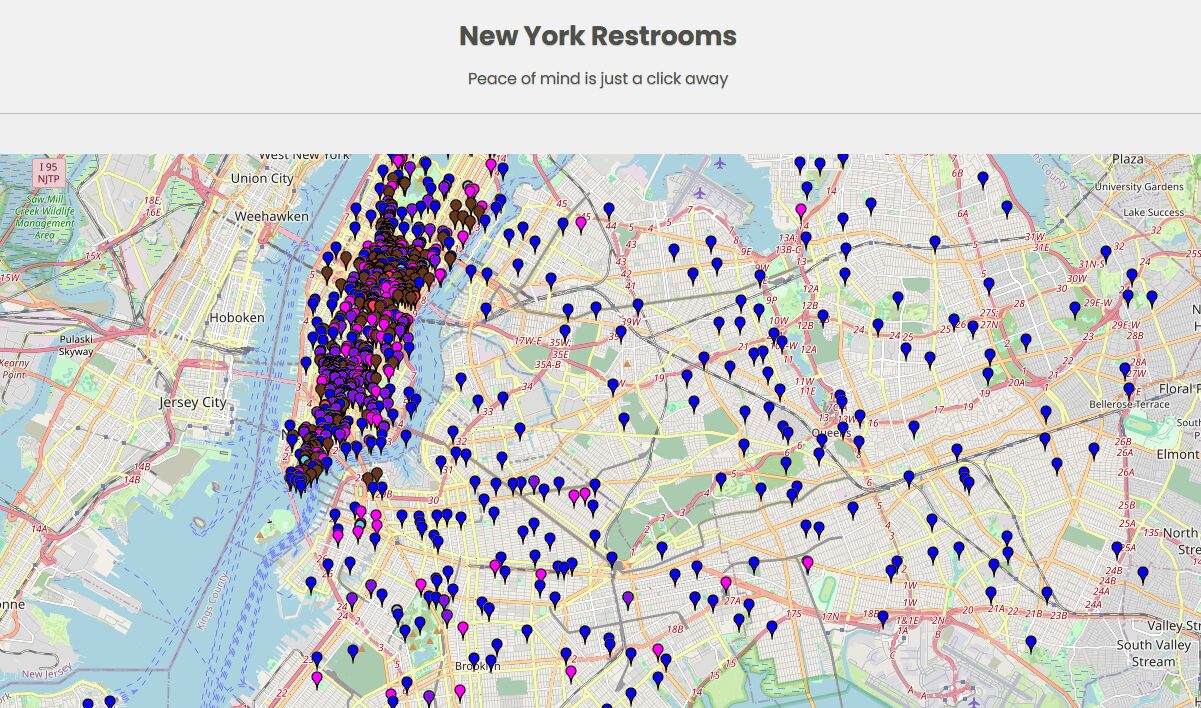In September, I found myself in need of a bathroom while on assignment in Sheepshead Bay. My standard move is to find an establishment where I can use my computer and avail myself of their facilities – I find that coffee shops tend to fit the bill. I found one and downed an americano and a seltzer water while I worked, mistakenly confident that a sit-down place selling products that induce nature’s call would have their customers covered, but no luck. Miffed that bathroom privileges did not come with what I thought was an already inflated price, I looked for a Starbucks, but the nearest one of those was also lacking. In this case, it appeared that they maybe used to have a bathroom for customers but changed policy, as a tantalizing door right next to the tables had a keypad lock on the doorhandle and a sign saying “employees only.” The saga ended with me finding a place somewhere, but I couldn’t tell you if it was in that area or back at the office (a nearly hour-long subway ride away), as all I can remember is the high-pitched discomfort and frustration that bordered on pain before the eventual relief.
This was the third time in my life as a native New Yorker that I could remember being in this race against my body due to a lack of restrooms. There’s something embarrassing and undignified about such a problem in general, but having it in the proverbial “greatest city in the world” is just a cruel joke. A brief online search will show report after report going back years in local media about this problem, with an opinion piece in the New York Times published today from another New Yorker detailing her own restroom-related trials and tribulations. Depending on one’s organs, there is the option of doing it standing, finding a still-public-but-secluded spot for the moments it takes to do the deed; aside from the ethical questions this raises, there’s also the risk of a run-in with law enforcement. It’s no small matter, and under the Adams administration, it can get you in more trouble than it used to.
A 2016 law enabled and steered the NYPD to issue civil citations rather than criminal summonses for the offense, but a report last year from THE CITY revealed how Mayor Eric Adams dramatically ramped up enforcement of the issue as a criminal matter. In the first six months of 2023, police issued four times more criminal summonses for public urination than in the same period in 2019. Critics in city government say that this has the potential to disrupt the families and communities that police are meant to be serving, giving an inordinate number of New Yorkers criminal records for a low-level offense. Meanwhile, the NYPD claimed at the time of the report that it is responding to quality-of-life complaints and that public urination is one of a number of acts considered “precursors” to more serious crimes.

Even taking the police at their word on the correlation between public urination and crime, authorities’ aggressive and paternalistic approach that treats the issue as a criminal matter elides the obvious public health concerns. (It’s a typical approach from city authorities, reminiscent of the MTA’s callous anti-homeless initiative that removed benches on subway platforms, punishing the sick and elderly to further immiserate the poor.) There are a whole host of health conditions, from inflammatory bowel disease (IBD) to Parkinson’s, not to mention pregnancy, that make frequent trips to the restroom a fact of life and therefore warrant having public toilets available. According to HealthCentral, 8% of the general population in the United States has had a bowel or urinary accident in the last year, with three quarters of them saying it could have been avoided if they had been able to find a nearby restroom. “We know that 75% of IBD patients report staying at home and avoiding activities because they have no confidence that they’ll be able to access a public restroom,” the NYC-based president and CEO of the Crohn’s & Colitis Foundation Michael Osso told the publication. “It’s really a public health crisis.”
The obvious solution is for the city to defuse the issue by adding more public restrooms. Mayor Adams announced an initiative last June called “Ur In Luck,” pledging to build 46 new restrooms to add to the city’s roughly 1,1000 already-existing facilities, 36 of which will also be receiving upgrades like more stalls. The announcement of Ur in Luck also included the release of the New York City Official Public Restrooms Google Maps layer. (A Rutgers University professor also published his own map, which includes extra sites like fast food chains and bookstores.) The additional public toilets are a drop in the bowl, doing little to change the ratio of one toilet for every 6,000 New Yorkers, which puts us 93rd out of the 100 largest cities in the country for public toilets per capita.
Leah Goodridge, who wrote today’s piece in the Times, notes that City Councilwoman Sandy Nurse is proposing legislation that would get that ratio down to 2,000 by 2035. Such measures, and more, are the least of what our institutions could do if we insist on calling our city the “greatest” in the world.












